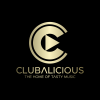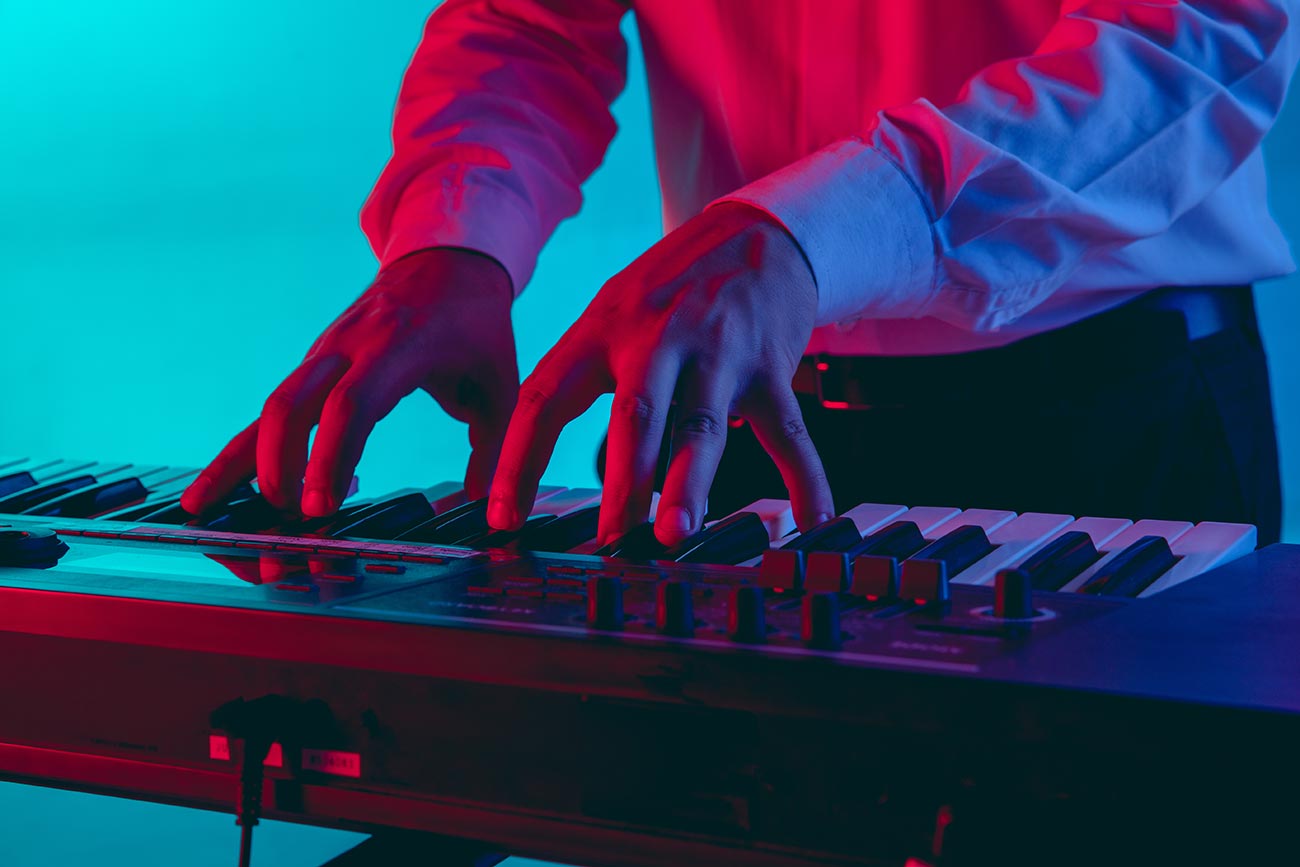-
 play_arrow
play_arrow
Clubalicious Clubalicious Radio
-
 play_arrow
play_arrow
London Calling Podcast Yana Bolder

The Traveling Wilburys were perhaps popular music’s most unusual “supergroup.” George Harrison, Bob Dylan, Jeff Lynne, Tom Petty and Roy Orbison wrote all the material together, worked up arrangements on the spot and made two fine, light-hearted albums that captured the personalities and eccentricities of it members. They never toured, and their vibe was casual in the extreme. Still, they produced a number of excellent songs, including the infectious radio hit “Handle With Care.”
It was during the recording of Harrison’s 1987 LP, Cloud Nine, co-produced with Lynne, that the former Beatle first got the idea. “At the end of the day, we’d be listening back, and he’d say, ‘Oh, I wish we could have a group,’” Lynne says. “George could always get what he wanted.” The two kidded around with names for such a dream band of “over-40s,” jokingly referring to them as possibly The Tremblers, Lynne tossing in “Wilburys,” a name akin to a Willoughby Street in his native Birmingham, engineer Richard Dodd recalls. The name eventually evolved into Traveling Wilburys, the two offering up their picks for “if-only” bandmembers, including Dylan, Orbison and Eric Clapton.
The idea for Traveling Wilburys resurfaced in the fall of 1987 when Harrison, Lynne and engineer Bill Bottrell were at the Village Recorder in Los Angeles creating an extended mix for a 12-inch single of Harrison’s “Got My Mind Set on You.” “We were sitting around, and George said, ‘Yeah, I guess we’re gonna have a group or something,’” Bottrell, who had worked with Lynne since the early 1980s, recalls. “Then he handed me a Traveling Wilburys guitar pick.”
A few months later, in April, another B-side was in order for Harrison, so he finagled his producer, Lynne, who was working with Orbison, away from the singer’s sessions — with Orbison in tow. The three were joined by another collaborator, Petty, with whom Lynne had been recording Full Moon Fever. “We were getting close to being a band by the time we got out to Bob’s that day,” Petty recalls.
Needing a place to record that was under the radar, Harrison called Dylan to find out if the garage studio at his Malibu home was available. Lynne and Bottrell had been to Dylan’s home a few months earlier. “We did a little song with Bob, just on our own — ‘I’m in the Mood for Love,’” Lynne explains. But in April, Harrison arrived with his friends and the beginnings of a new song, which he used to lure Dylan into participating in the group. “George told me the way he hooked Bob into the idea was to ask if they could use Bob’s studio,” Dodd recalls. “Bob was saying, ‘Well, I don’t know if it works,’ and George told him, ‘Well, we’ll get someone to make it work.’”
Dylan wondered what Harrison had in mind, and George explained, “We’re just going to sit down, write a song and record it.” When Dylan inquired how such a thing could be done so easily, Harrison looked around and, spotting an Ampex 2-reel tape box, noted a legend on the side of the carton — “Handle With Care.” “And George just broke into this previously written song,” Dodd says.
Dylan’s studio was indeed hardly in “record-ready” mode. “He had a pile of equipment Dave Stewart had sold him, and it looked to me like it hadn’t really ever been used,” Bottrell says. “It was semi-connected, but it wasn’t working very well so I had to sort of make it work.” As for a “studio,” he says, “There was a booth of some sort. But the garage door was still just the garage door.”
The studio had a 2-inch, 24-track ACES tape machine and an ACES console. “I remember the tape machine was skewing, so we had to baby it along a little bit,” Bottrell says. “I was worried it would be heavily out of alignment — there was nothing there for me to use to align it.” In fact, later during overdubbing at Westlake Audio, Bottrell had to set up the machine by ear when playing back the tapes to set it in alignment with the recordings made at Dylan’s.
Once the bandmembers arrived, Lynne and Bottrell laid down a drum machine click track to record to. “The next thing I remember,” Bottrell says, “was all the guys sitting in a circle, each with an acoustic guitar, and I scrambled to find enough mics to record them.” Adds Lynne, “It was just five microphones, five strumming guitars in a semicircle — some 6s, some 12s — double-tracked. So you’d end up with 10 guitars. A really beautiful, shimmery, thick sound, like a thick skiffle.”
Lynne played bass and drums on the track. “Jim Keltner, who played on the rest of the album, couldn’t get there that day,” explains Lynne. “[The drumming] was all done in pieces,” adds Petty.
The rhythm track completed, the group took a break for dinner. “We wrote the words sitting outside around the grill in Bob’s garden after he’d made us barbeque,” Lynne recalls. The menu? “It was chicken,” says Petty.
“They were having the best time,” recalls Bottrell. “They kept coming and going into the yard, coming back with lines. It was really collaborative.” Says Petty, “It was a new experience, doing all that collaboration.”
Classic Tracks: Supertramp’s “The Logical Song”
The next day, the group retreated to a more professional environment, Hollywood’s Westlake Audio, to complete the song. Harrison re-recorded his lead vocal and played the song’s solo on a Fender Strat, while Lynne added a cowbell and the song’s distinctive lead riff, played on his Fender electric 12-string. Ian Wallace even added some tom toms. “It sounded fantastic to me,” says Lynne. “I was thrilled to bits with it.” Adds Petty, “It was a band.”
Present at the Westlake session, too, was Petty veteran engineer Don Smith, who had been asked to assist with some technical issues. Upon leaving, Smith recalls, Harrison, not wanting to wait for a bill, insisted on paying the assistants on the spot. “It’s 7:00 on a Sunday morning, the sun’s coming up, we’re standing in the parking lot, and George goes, ‘I’m not leaving until somebody gets down here so I can pay ’em!’”
The following day, Harrison presented his “B-side” to Warner Bros. Records chief Mo Ostin, who had other ideas about the track: “Mo said, ‘No, you can’t use it for that. You should be doing that group you’ve been telling me about that you want to do,’” Lynne recalls. “I think, in a way, he really wanted that band to happen,” says Petty.
A month later, Don Smith, who was working in Montserrat with Keith Richards, got a call from Petty asking him to return to L.A. to continue with the next phase of recording the album. “Keith gave me three weeks off,” he recalls. “I left Montserrat on a Tuesday, rested on Wednesday and was working with them on Thursday.” (Bottrell, who was developing his career as a producer, opted out of the project and would go on to produce artists such as Madonna and Sheryl Crow, to name a few.)
The band again retreated to the home of a friend to record; in this case that of Dave Stewart. “Dave kind of moved through everybody’s life in one way or another,” says Petty. “He was out of town, so that became the clubhouse.”
The “studio” was a guest house on the property. “It was not a studio — nothing worked,” Smith says. “It was a kitchen and a room with a console in it. There was a little vocal booth, but there were no acoustics. I was like, ‘Why do you want to record here? Are you guys out of your minds?’” Smith had two days to build a studio. “We got phones, had people come in, and we rented carpets and stuck them on the walls. And not one patch cable on the console would work. We had to go and have all that done.”
“We” included Alan “Bugs” Weidel — a cohort of Petty’s since his Mudcrutch days — who handled everything from instruments to recording equipment. “Whatever needed to be done on the Wilburys, he was ‘the guy,’” says Smith.
Smith recorded through Stewart’s small Soundcraft 1600 console onto a rented Atari MTR-90 tape machine. Mics included a small selection of Neumanns, an AKG 414 and a pair of prized Telefunken 251s rented from a friend of Smith’s. “They were in brand-new condition, with consecutive serial numbers and ‘1963’ on them. George wanted to buy them real bad,” Smith notes.
The group set themselves up in the kitchen — the only place available — in a semicircle. “I had five guitars and five microphones,” Smith recalls. “We only recorded two tracks of acoustic guitars, all pre-balanced.”
Writing, in the kitchen, started around 11 each morning, with recording beginning in the afternoon and usually lasting until about 8 in the evening, after which the group were often treated to Beatles tales from Harrison. Sometimes, one of the band would come up with a new song during the recording of another. “We were right in the middle of getting the sounds for ‘Last Night,’ and Bob starts coming up with the rhythm for ‘Congratulations,’” Smith says. They went, ‘Did you get that on tape?’ ‘Yeah, I got it.’”
Recording the group vocals, even with such established pros, was a challenge. “The first time we did a backing vocal part, I got them balanced by having them step back and forth,” says Smith. “And then I went, ‘Okay, everybody, don’t move,’ and I ran down with a piece of tape and marked all their feet. They were all laughing at me — I’d done it before, but not with that kind of a cast of characters! They’d start on their marks, and I would go, ‘Okay, George, take a step forward’ for his line in a song.”
Drummer Jim Keltner was brought in to overdub drums, replacing a click track from a DMX drum machine used to record once a handful of songs had been tracked. Keltner was set up in the main house, Smith miking him simply with a Neumann U69 two feet in front of the kit at about head height, “just picking up what your ears are picking up,” he says. This was supplemented with an Electro-Voice RE20 on the kick and an SM57 above the snare.
Safety copies of the tapes were made — under strict supervision — after which the masters were loaded on a plane with Lynne, who joined the rest of the band (minus Dylan, who was on tour) a week later at Harrison’s home studio in England for three or four weeks of overdubs and mixing.
Dodd recalls the Traveling Wilburys’ sound being derived from an amalgam of ideas from the two experienced producers: Harrison and Lynne. “They’re both very competitive,” he says. Lynne might prefer an overdub for a track, while Harrison might be inclined not to include one. “It was like watching two thoroughbreds going at it. I mean, both of these guys are so good.”
The resulting albums, Traveling Wilburys Vol. 1 and its smartly named follow-up, Traveling Wilburys Vol. 3 (recorded by Dodd a year later), remained favorites of all involved, including Harrison, who died in 2001. “He missed having a band,” says Petty. “And he loved the Traveling Wilburys. He treasured it.” The discs were recently reissued by Rhino, along with bonus tracks and a DVD featuring a 25-minute documentary chronicling the recording of the albums.
This article was first posted in November, 2007.
Written by: Admin
Similar posts
Recent Posts
- 🎶 New Music: JID, OneRepublic, Morgan Wallen, Post Malone, MarkCutz, Kidd Spin + More!
- Classic Tracks: The Fireballs’ “Sugar Shack”
- Classic Tracks: Arlo Guthrie’s “City of New Orleans”
- Classic Track: k.d. lang’s “Constant Craving”
- Classic Tracks: Waylon Jennings’ “Are You Sure Hank Done It This Way”
Recent Comments
No comments to show.Featured post

Latest posts

🎶 New Music: JID, OneRepublic, Morgan Wallen, Post Malone, MarkCutz, Kidd Spin + More!

Classic Tracks: The Fireballs’ “Sugar Shack”

Classic Tracks: Arlo Guthrie’s “City of New Orleans”

Classic Track: k.d. lang’s “Constant Craving”

Classic Tracks: Waylon Jennings’ “Are You Sure Hank Done It This Way”
Current show
Upcoming shows

The House Crunch
Terri B
00:00 - 01:00
In Session
Sister Bliss
01:00 - 02:00
Fresh Is Fresh
This Weeks Hottest Releases
02:00 - 09:00
Swedish Dance Chart
09:00 - 11:00

Fresh Is Fresh
This Weeks Hottest Releases
11:00 - 16:00Chart
Powered by Dee jay promotions visit us








 Invalid license, for more info click here
Invalid license, for more info click here